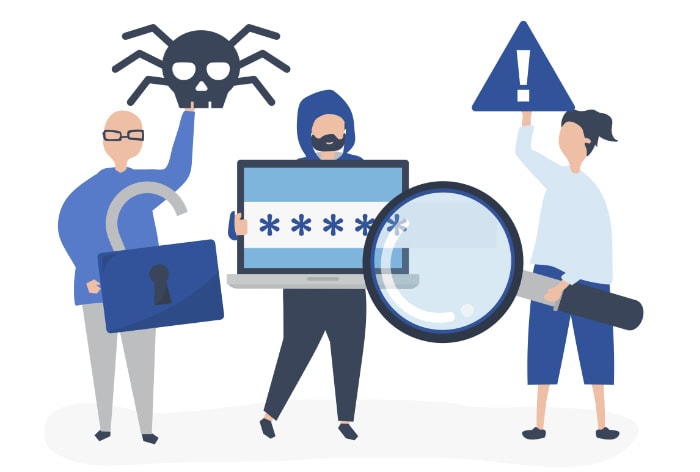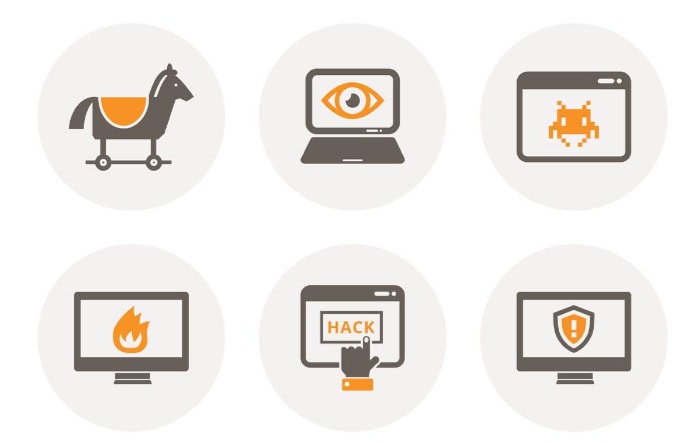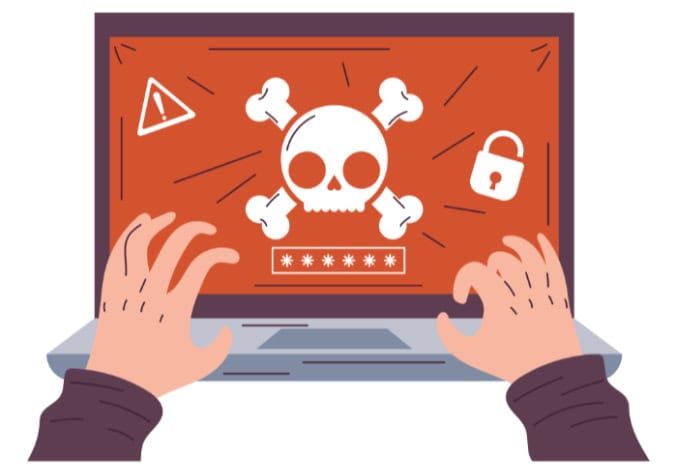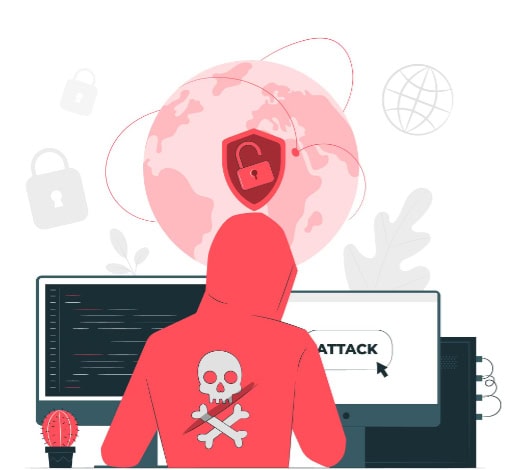What Is Malware? Types, Impacts, and How to Prevent It

Every click, download, or email we interact with online carries a potential risk, and at the heart of many of these dangers lies malware. From encrypting personal files to stealing sensitive data or disrupting entire networks, malware has become a powerful weapon for cybercriminals.
Its adaptability and deceptive nature make it a challenge even for seasoned security experts, let alone everyday users.
Malware Explained
Malware, short for malicious software, is designed with the intent to harm or exploit computer systems, networks, and devices. Unlike legitimate software, which serves a beneficial or neutral purpose, malware operates with deceptive and malicious objectives.
Its primary goals often include gaining unauthorized access to sensitive information, disrupting normal system operations, or exploiting resources for illegal activities. Malware is not a singular type of threat but rather a term that encompasses a wide variety of harmful programs, each with its own method of attack.
What makes malware especially dangerous is its ability to disguise itself as harmless or even useful software. Once installed, it can silently work behind the scenes, collecting data, corrupting files, or giving attackers control over a device.
This deceptive nature is what distinguishes it from typical programming errors or faulty applications—the intent behind malware is always malicious.
A Brief History of Malware and Its Evolution
The origins of malware can be traced back to the earlier days of computing. One of the first malicious programs to gain attention was the Creeper virus in the 1970s, which was more of an experimental program than a harmful one.
As technology advanced, so did the methods used by malicious actors. During the 1980s, computer viruses became more prevalent, spreading through floppy disks and other physical media. These early programs were relatively simple, often designed to display pranks or cause minor disruptions.
The rapid expansion of the internet in the 1990s marked a turning point in malware evolution. Cybercriminals began exploiting global connectivity to create worms, which could spread without user intervention, and Trojans, which deceived users into installing them by pretending to be legitimate software.
This period also saw the rise of email-based distribution methods, such as phishing, which remain a common tactic today.
In the 2000s and beyond, malware became far more sophisticated, with threats like ransomware encrypting data and demanding payment for its release, and spyware quietly collecting sensitive personal and financial information. Modern malware is often tied to organized criminal enterprises, with its creators leveraging advanced techniques to evade detection.
From self-replicating worms to stealthy rootkits, malware continues to evolve, constantly adapting to the latest security measures.
Types of Malware

Malware comes in various forms, each designed to disrupt, harm, or exploit systems in unique ways. Some types are engineered to spread rapidly across networks, while others aim to remain hidden, gathering sensitive information or causing damage over time.
Below are some of the most common types of malware, each posing distinct threats to users and organizations alike.
Viruses
Viruses are one of the oldest and most recognizable forms of malware. They attach themselves to legitimate files, programs, or documents and rely on user interaction to spread.
For example, a user might unknowingly execute an infected file, triggering the virus and allowing it to replicate. Once activated, a virus can perform a range of harmful actions, such as corrupting or deleting data, disrupting system operations, or allowing unauthorized access to the infected device.
What makes viruses particularly troublesome is their dependence on human activity to propagate. Email attachments, file-sharing platforms, and even software updates can serve as carriers.
While modern antivirus software has been effective in combating viruses, they remain a persistent threat in environments where security measures are lax or outdated.
Worms
Unlike viruses, worms are self-replicating programs that do not require user interaction to spread. Worms exploit vulnerabilities in networks, rapidly making copies of themselves and infecting other connected systems.
Once inside a network, they can overload resources, cause disruptions, and even pave the way for additional malware.
Because worms spread so quickly, they can have devastating effects, particularly in large, interconnected environments. For instance, a single infected device on a corporate network can result in widespread disruption in a matter of hours.
Worms are often used by attackers as the entry point for launching more sophisticated attacks or deploying additional malware.
Ransomware
Ransomware is one of the most disruptive and financially damaging forms of malware. It works by encrypting a user’s data, rendering it inaccessible.
Attackers then demand payment, often in cryptocurrency, in exchange for the decryption key needed to restore access to the files. Victims are typically given a limited amount of time to pay, with threats of permanently deleting the encrypted data if the deadline is missed.
This type of malware is frequently delivered via phishing emails, malicious attachments, or compromised websites. While individuals can be targets, ransomware often focuses on businesses, healthcare providers, and government organizations, where the stakes are higher and the likelihood of a payout is greater.
Spyware and Adware
Spyware operates quietly in the background, gathering sensitive information such as passwords, credit card numbers, and browsing habits. This information is then sent to the attacker, who can use it for identity theft, financial fraud, or other malicious purposes.
Spyware often infiltrates systems through seemingly legitimate downloads or bundled software.
Adware, on the other hand, bombards users with intrusive advertisements. While less harmful than spyware, adware can significantly degrade system performance and lead to unwanted exposure to malicious websites.
In many cases, adware is also bundled with free software, tricking users into installing it unintentionally.
Trojans
Trojans are a particularly deceptive type of malware. Disguised as legitimate software, they trick users into installing them, often under the guise of free downloads, security updates, or pirated programs.
Unlike viruses or worms, Trojans do not self-replicate. Instead, they gain access to a system when the user unknowingly installs them.
Once inside, Trojans can open backdoors for attackers, allowing them to steal data, install additional malware, or take full control of the compromised system. Their ability to masquerade as trustworthy applications makes Trojans one of the most versatile and widely used forms of malware in targeted attacks.
How Malware Works

Malware operates through a combination of clever tactics designed to infiltrate systems, spread across networks, and remain undetected for as long as possible. These processes involve methods of infection, propagation, and evasion, all working together to achieve the attacker’s malicious goals.
Infection Methods
Malware often gains entry into systems through tactics that take advantage of user behavior or system vulnerabilities. One common method involves phishing emails, where cybercriminals craft convincing messages designed to trick recipients into clicking malicious links or downloading infected attachments.
These emails often appear to come from trusted sources, making them highly effective.
Another method is the drive-by download, which occurs when a user visits a compromised website. Even without actively downloading anything, malicious code can automatically be installed on the device through vulnerabilities in the user’s browser or operating system.
These types of attacks are especially dangerous because they do not require direct user interaction beyond simply accessing a website.
Physical media, such as infected USB devices, also serves as a frequent delivery mechanism for malware. Once connected to a computer, the malware stored on the device can execute and spread to the host system.
This technique is often used in targeted attacks, where an organization or individual is intentionally compromised.
Spread Mechanisms
Once malware has infected a system, its next objective is often to spread and maximize its reach. Worms are a prime example of this, as they are capable of self-propagating across networks without any further action from the user.
By exploiting weaknesses in network configurations or software, worms can move from one device to another, rapidly infecting entire systems.
Social engineering tactics represent another common way for malware to spread. This involves manipulating users into performing actions that inadvertently install malware, such as downloading fake software updates, clicking on intrusive advertisements, or opening seemingly harmless email attachments.
Attackers craft their messages or tools to look convincing, making it easier to lure victims into their trap.
In both cases, the ultimate goal is often to infiltrate as many systems or devices as possible, increasing the scope and impact of the attack while paving the way for further exploitation.
Evasion Techniques
Malware developers are constantly devising ways to avoid detection by antivirus software, security tools, and IT professionals. One such technique is the use of polymorphic code, which allows malware to alter its structure or signature after each infection.
This makes it difficult for traditional antivirus programs to recognize the malicious code, as it appears different during each scan.
Additionally, some malware is designed to detect when it is being analyzed within a controlled environment, such as a sandbox or debugger. Anti-sandboxing or anti-debugging techniques prevent researchers from studying the malware’s behavior, making it harder to identify its functionality or develop countermeasures.
These methods of evasion demonstrate just how adaptable malware has become. By continuously changing form and employing sophisticated detection avoidance strategies, malware can remain hidden for extended periods, causing damage before it is identified and eliminated.
Impacts of Malware

Malware doesn’t just disrupt devices; it can upend lives, cripple businesses, and inflict severe economic damage. Its effects go beyond the technical, affecting individuals, organizations, and economies on both small and large scales.
Whether it's exposing personal details or derailing a company’s operations, the consequences of malware can be long-lasting and far-reaching.
On Individuals
For individuals, malware can feel like a direct violation of personal security. One of the most common consequences is identity theft, where attackers use stolen credentials to impersonate a victim.
This can lead to unauthorized purchases, drained bank accounts, or other forms of financial fraud, often leaving victims struggling to repair their credit or recover stolen funds.
Another significant impact is the loss of personal data. Malware such as ransomware may lock access to important files, including photos, documents, and videos, holding them hostage unless a ransom is paid.
Some forms of malware even expose private information, compromising the user’s privacy and putting their personal or professional reputation at risk.
These experiences, beyond the obvious financial or data-related harm, often cause worry and frustration for victims, as they navigate the aftermath of a malware attack.
On Organizations
For organizations, malware can cause widespread damage that affects every layer of operations. One direct impact is the disruption of day-to-day activities, as systems are often rendered unusable.
This can result in costly downtime, especially for businesses that rely on technology to maintain productivity and serve customers. The longer systems remain offline, the greater the financial losses.
Data breaches are another major risk for organizations. Malware can grant attackers unauthorized access to sensitive company information or customer data.
Intellectual property theft, where valuable proprietary information is stolen, can hinder a company's competitive edge. Additionally, when customer data is exposed, the organization faces reputational damage and a loss of trust, which can take years to rebuild.
In many cases, companies subjected to a malware attack are forced to invest heavily in damage control. This often includes hiring cybersecurity experts, notifying affected customers, and addressing legal or regulatory penalties.
Economic Costs
The financial toll of malware is immense, affecting individuals and organizations alike. For individuals, the costs often include the recovery of stolen funds, the replacement of compromised devices, or even the payment of ransoms.
The emotional burden of dealing with these situations is an added cost that cannot be overlooked.
For businesses and organizations, the expenses can quickly spiral. Recovery efforts often involve hiring specialists to remediate the damage, restoring data from backups, or rebuilding entire IT systems.
Regulatory fines may follow, especially in cases where customer data is mishandled. Lost productivity during operational downtime adds another layer of financial strain, further compounding the issue.
The broader economic impact of malware is also significant. Attacks targeting major organizations or industries can disrupt supply chains, stall services, and even affect consumer confidence in services or technology itself.
Malware isn’t just a technical threat; its ripple effects extend far beyond devices, influencing economies and lives alike.
Detecting and Preventing Malware

Malware detection and prevention are critical for maintaining security in a world where cyber threats are becoming increasingly sophisticated. While detecting malware early can help minimize damage, prevention strategies are essential for reducing the risk of infection in the first place.
A combination of awareness, proactive measures, and robust tools is vital to staying ahead of these threats.
Detection Methods
Recognizing the signs of malware infection is often the first step in taking action. Unusual system behavior, such as sluggish performance, frequent crashes, or a sudden influx of unexpected pop-ups, can indicate the presence of malware.
Files disappearing, strange messages appearing, or excessive network activity without explanation are other red flags that something is amiss. While these signs do not always confirm malware, they warrant further investigation.
Advanced tools, such as antivirus software and behavioral analysis tools, play a significant role in detecting malware. Antivirus solutions scan files and programs for known malicious signatures, while behavioral analysis tools identify suspicious activity, even when the malware uses methods to evade traditional detection.
These tools work together to identify and isolate threats before they can cause significant harm.
Prevention Strategies
Preventing malware infections starts with maintaining strong digital hygiene. One of the most effective strategies is keeping software up to date.
Regular updates and patch management address vulnerabilities that attackers often exploit to deliver malware. Ensuring that all operating systems, browsers, and applications are updated reduces these entry points significantly.
The use of firewalls, intrusion detection systems, and email filters provides layers of protection against potential threats. Firewalls act as a barrier, controlling incoming and outgoing network traffic, while intrusion detection systems monitor for suspicious activity across the network.
Email filters reduce the risk of phishing attacks by identifying and blocking malicious messages before they reach users.
Educating individuals about safe online practices is equally important. For example, avoiding suspicious links, not clicking on attachments from unknown senders, and being cautious about downloads can drastically reduce the chances of malware infection.
Cybersecurity awareness is a powerful tool in reducing human error, which attackers often exploit.
Best Practices for Organizations
Organizations, particularly those handling sensitive data, must adopt comprehensive strategies for malware prevention. Implementing a layered security model, such as the Zero Trust approach, adds multiple defense mechanisms to ensure that even if one layer is breached, others remain effective.
This model includes verifying the identity of all users and devices attempting to access a system.
Regular security audits are another essential practice for organizations to identify and address potential vulnerabilities. These audits help determine whether systems are up to date, properly configured, and capable of defending against current malware threats.
In addition, having a well-documented incident response plan is invaluable. This ensures that if a malware attack occurs, there are clear steps to contain and resolve the situation efficiently.
Conclusion
Malware continues to pose a significant threat to personal devices and organizational systems alike, with its various forms capable of inflicting widespread harm. From compromising sensitive information to disrupting operations and incurring substantial financial costs, its impact cannot be ignored.
Recognizing how malware works, the methods it uses to infect and spread, and the ways it evades detection is essential for staying prepared against these threats.
Proactive measures, such as keeping systems updated, utilizing robust security tools, and adopting safe online behaviors, are vital in reducing risks. For organizations, implementing comprehensive strategies like layered security and regular audits adds an additional level of protection.
By remaining vigilant and applying these defenses, individuals and businesses can minimize the likelihood of falling victim to malware while maintaining a safer digital environment.


